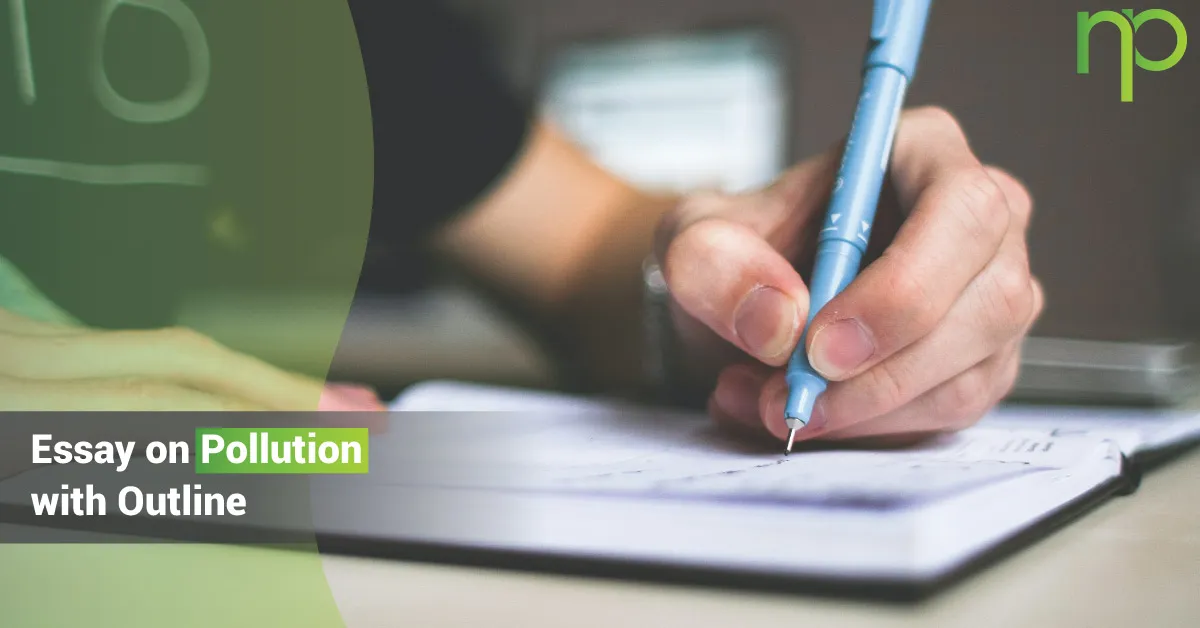
- November 20, 2023
- ubaidah khan
- 0
Pollution is the preface of dangerous substances into the terrain, causing adverse goods. This essay explores colorful types of pollution, their causes, goods, and implicit results to address this pressing global issue. The compass of pollution is vast, encompassing air, water, soil, noise, and light pollution. Its impact extends beyond environmental declination, affecting mortal health, ecosystems, and husbandry.
Types of Pollution:
- Air Pollution: Air pollution results from the release of adulterants into the atmosphere, primarily from artificial processes, vehicle emigrations, and the burning of fossil energies.
- Water Pollution: Water pollution occurs when pollutants enter water bodies, risking submarine life and posing pitfalls to mortal health. Sources include artificial discharges, agricultural runoff, and improper waste disposal.
- Soil Pollution: Soil pollution involves the presence of poisonous substances in the soil, negatively affecting factory growth, and entering the food chain.
- Noise Pollution: Noise pollution is the inordinate, disturbing noise generated by mortal conditioning, similar to business, artificial operations, and civic development.
- Light Pollution: Light pollution disrupts natural ecosystems and mortal circadian measures through inordinate or misdirected artificial light.
Causes of Pollution:
- Industrial Conditioning: diligence contributes significantly to pollution through the release of adulterants into the air, water, and soil. Struggles to minimize artificial emigration are pivotal in mollifying environmental impact.
- Vehicle Emigrations: The combustion of fossil energies in vehicles releases adulterants like carbon monoxide and nitrogen oxides, contributing to air pollution. Transitioning to cleaner transportation options is imperative.
- Improper Waste Disposal: operation leads to the accumulation of adulterants in tips, polluting soil and water. Sustainable waste disposal practices are essential for pollution forestallment.
- Deforestation: The junking of timber disrupts ecosystems, contributing to soil corrosion and loss of biodiversity. Afforestation and sustainable forestry practices are critical for maintaining ecological balance.
- Agricultural Practices: The use of fungicides, diseases, and ferocious husbandry styles can affect water and soil pollution. Espousing sustainable agrarian practices is crucial to reducing agrarian pollution.
Effects of Pollution:
- Impact on Human Health: Pollution has direct and circular goods on mortal health, ranging from respiratory problems caused by air pollution to waterborne conditions performed from polluted water sources.
- Environmental Consequences: Pollution negatively affects ecosystems, leading to biodiversity loss, niche destruction, and dislocations in natural processes.
- Economic Ramifications: The profitable costs of pollution include healthcare charges, loss of agrarian productivity, and damage to diligence that depends on a healthy terrain.
Measures to Combat Pollution:
- Environmental Regulations: strict regulations and programs are necessary to control and reduce pollution. Governments play a pivotal part in administering and streamlining environmental laws.
- Technological inventions: Advancements in technology offer results to reduce pollution, similar to cleaner energy sources, waste treatment technologies, and sustainable product styles.
- Public Mindfulness and Education: Educating the public about the consequences of pollution fosters a sense of responsibility. Mindfulness juggernauts can inspire individuals to borrow eco-friendly practices.
- Sustainable Practices: Promoting sustainable living, including responsible consumption, waste reduction, and conservation sweats, is essential for long-term pollution forestallment.
Case Studies:
Examining pollution incidents, similar to artificial disasters or large-scale environmental impurity, provides perceptivity into the consequences of negligence. Successful Pollution Mitigation enterprise pressing successful pollution mitigation enterprise showcases effective strategies and encourages the relinquishment of analogous measures encyclopedically.
Future Challenges and Results:
Arising pitfalls relating to pitfalls, similar to new adulterants or changing climate patterns, helps anticipate and address unborn challenges proactively. Addressing pollution requires transnational collaboration. Participating in knowledge, technologies, and coffers enhances collaborative sweat to combat this global issue.
Conclusion:
In conclusion, pollution poses significant trouble to the terrain, mortal health, and husbandry worldwide. Understanding its colorful forms, causes, and goods is pivotal for enforcing effective measures to combat pollution. As servants of the earth, it’s our responsibility to borrow sustainable practices, support environmental enterprise, and advocate for programs that prioritize pollution forestallment. Only through collaborative action can we ensure a cleaner, healthier future for generations to come.